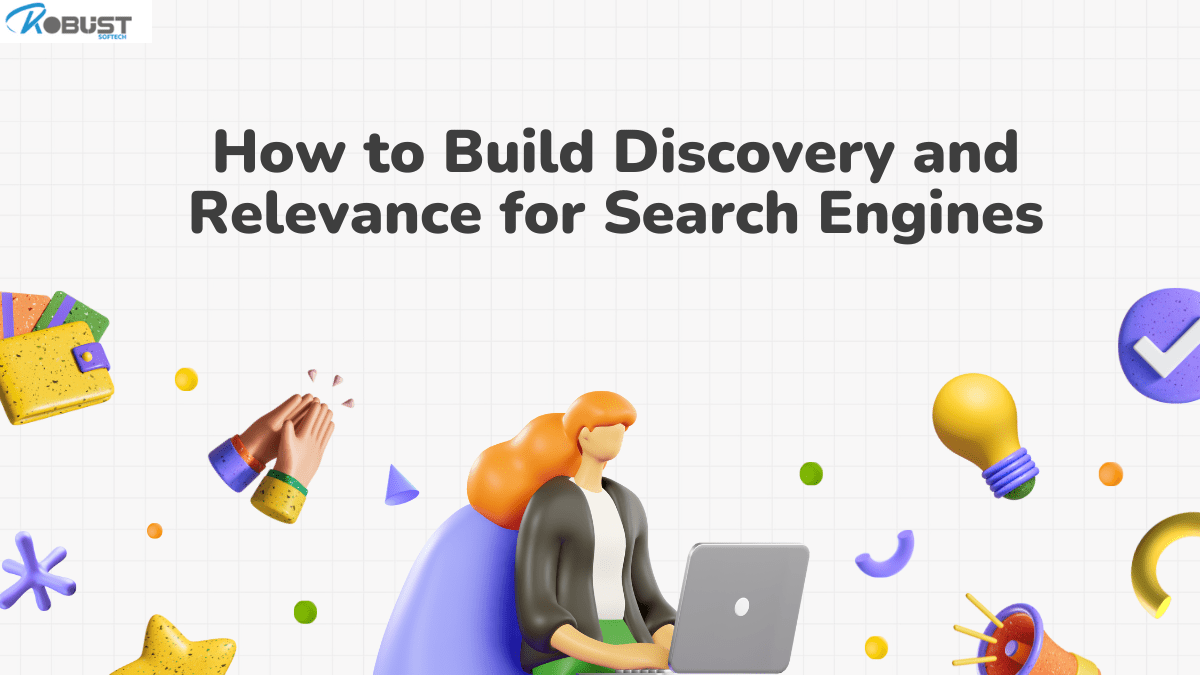In the ever-evolving world of digital marketing, search engine optimization (SEO) plays a crucial role in ensuring that your content reaches the right audience. But how do you make sure your content not only gets discovered but is also deemed relevant by search engines? This article dives deep into the strategies and practices necessary to build both discovery and relevance, ultimately helping your content rank higher on search engines like Google.
Understanding Search Engine Algorithms
Before diving into the nuts and bolts of SEO, it’s essential to understand how search engines work. Search engines, like Google, use complex algorithms to rank content based on several factors, including relevance and authority. These algorithms are designed to provide users with the most accurate and helpful information related to their search queries.
How Search Engines Rank Content: Search engines crawl and index web pages to understand the content. They consider factors like keywords, user engagement, backlinks, and more to determine how a page should rank in search results.
Key Factors Influencing Discovery: Discovery refers to how easily search engines can find your content. Factors like the number of backlinks, the freshness of content, and the presence of keywords can all impact discovery.
The Role of Relevance in Search Rankings: Relevance is about how well your content matches a user’s query. Even if your content is discovered, it won’t rank well unless it’s Discovery and Relevance to what people are searching for.
Conducting Keyword Research
Keyword research is the foundation of effective SEO. It helps you understand what terms and phrases your potential audience is using to search for information related to your content.
Identifying High-Volume Keywords: These are the keywords that a large number of users are searching for. Ranking for these can drive significant traffic to your site, but competition is usually high.
Long-Tail Keywords and Their Impact: Long-tail keywords are more specific and less competitive, making it easier to rank for them. They are particularly useful for capturing niche audiences and often lead to higher conversion rates.
Using Keyword Tools for Better Insights: Tools like Google Keyword Planner, Ahrefs, and SEMrush can help you find the right keywords to target. These tools provide data on search volume, competition, and trends, allowing you to optimize your content effectively.
Creating High-Quality Content
Once you’ve identified the right keywords, the next step is creating content that not only includes these keywords but also provides value to your audience.
Writing for Your Audience, Not Just for Search Engines: It’s tempting to write content solely to rank higher, but this can backfire. Instead, focus on creating content that answers your audience’s questions and provides real value.
The Power of Original, Informative Content: Original content sets you apart from the competition. When you provide unique insights or in-depth analysis, users are more likely to engage with your content, share it, and link back to it.
Updating and Refreshing Content Regularly: Search engines favor fresh content. Regularly updating your existing content can help maintain or improve your rankings. This can be as simple as adding new information or expanding on a topic.
Optimizing On-Page Elements
On-page SEO is all about optimizing individual pages on your website to rank higher and earn more relevant traffic.
Crafting Effective Meta Titles and Descriptions: The meta title and description are often the first things a user sees in search results. Crafting compelling and keyword-rich titles and descriptions can significantly impact your click-through rate (CTR).
The Importance of Header Tags (H1, H2, H3, etc.): Header tags help structure your content, making it easier for both users and search engines to understand. Proper use of header tags can also improve your SEO by emphasizing important sections of your content.
Optimizing Images and Alt Text: Images make your content more engaging, but they can also be optimized for SEO. Including relevant keywords in your image filenames and alt text helps search engines understand the context of your images.
Internal Linking Strategies: Internal links help search engines discover and index more pages on your site. They also guide users to related content, improving the overall user experience and boosting your SEO efforts.
Enhancing User Experience (UX)
User experience is increasingly becoming a crucial factor in SEO. Search engines prioritize websites that offer a seamless, user-friendly experience.
Mobile-Friendly Design: With the rise of mobile searches, having a mobile-friendly website is no longer optional. Ensure your site is responsive and offers a good experience across all devices.
Improving Page Load Speed: Slow-loading pages can frustrate users and lead to higher bounce rates, which negatively impacts your SEO. Tools like Google PageSpeed Insights can help you identify and fix issues that are slowing down your site.
The Impact of Website Navigation on SEO: Clear and intuitive navigation helps users find what they’re looking for, reducing bounce rates and improving dwell time, both of which are positive signals to search engines.
Building Backlinks
Backlinks are one of the most powerful factors in SEO. They serve as votes of confidence from other websites, indicating that your content is valuable and trustworthy.
Why Backlinks Matter for SEO: High-quality backlinks can significantly boost your site’s authority and improve its rankings. However, it’s essential to focus on quality over quantity.
Strategies for Acquiring Quality Backlinks: Guest blogging, creating shareable content, and reaching out to industry influencers are just a few strategies to build backlinks. Always aim to get links from reputable, high-authority sites.
Avoiding Black-Hat SEO Practices: Tactics like buying links or participating in link farms can result in severe penalties from search engines. Always focus on ethical, white-hat SEO practices.
Leveraging Local SEO
For businesses that operate in specific geographical areas, local SEO is crucial for attracting customers.
Importance of Local SEO for Businesses: Local SEO helps your business appear in search results when people search for services or products in your area. It’s particularly important for small businesses and brick-and-mortar stores.
Optimizing Google My Business Profile: A well-optimized Google My Business profile can significantly improve your local search visibility. Make sure your profile is complete, accurate, and regularly updated.
Local Listings and Citations: Consistent and accurate local listings across various online directories reinforce your business’s location, helping to boost your local SEO efforts.
Utilizing Social Media for SEO
Social media and SEO are interconnected. While social signals aren’t a direct ranking factor, they can still influence your SEO efforts.
The Connection Between Social Media and SEO: Social media can drive traffic to your website, increasing your visibility and potentially leading to more backlinks.
Creating Shareable Content: Content that is easily shareable on social media platforms can amplify your reach and drive more traffic to your site.
Encouraging Social Sharing and Engagement: Engage with your audience on social media to build a loyal following. Social engagement can lead to increased brand awareness




